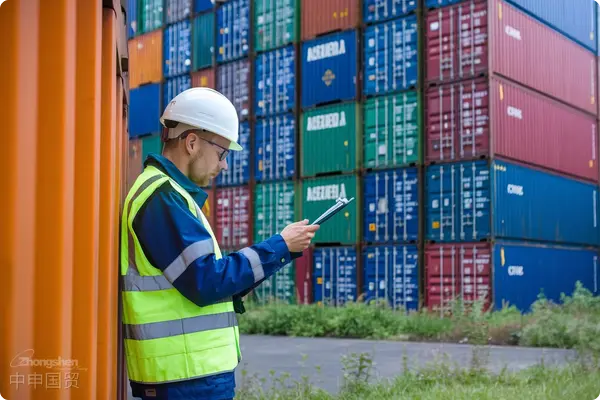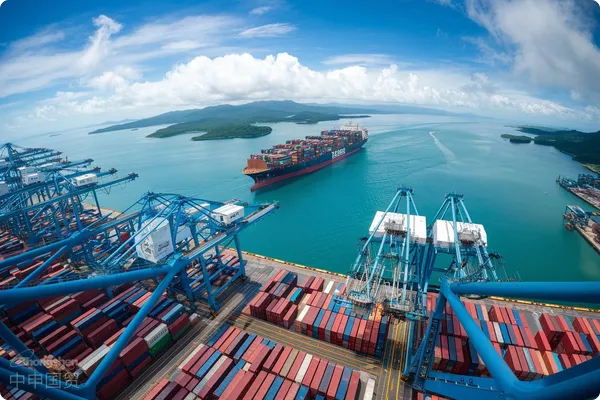- Shanghai Zhongshen International Trade Co., Ltd. - Two decades of trade agency expertise.
- Service Hotline: 139 1787 2118
Inside the warehouses of the US Customs and Border Protection (CBP), millions of small - value parcels from China are piled up like mountains, a scene that vividly depicts the sharp turn of the Trump administrations tariff policy. From signing an executive order on February 1 to cancel the tariff exemption for cross - border parcels worth less than $800, to urgently suspending the new regulation on February 7, the policy reversal within just seven days not only led to logistics paralysis but also exposed the deep - seated contradictions in the US trade regulatory system. According to CBP internal documents, as of February 6, the total number of backlogged parcels at major US ports exceeded 1.5 million. The X - ray inspection equipment at the Los Angeles Customs malfunctioned due to over - operation, forcing the activation of manual sorting channels.

The core of this storm is directed at the de minimis tariff exemption system - a policy that has been in place for decades, allowing small - value goods to be exempt from formal customs declaration and supporting the explosive growth of platforms such as Temu, Shein, and AliExpress. Data shows that the number of parcels enjoying this exemption in the 2024 fiscal year has reached 1.36 billion, nearly a ten - fold increase compared to 2015. The freight analysis agency Xeneta estimates that the daily volume of just Temu and Shein alone reaches 9,000 tons, equivalent to the global logistics network formed by 88 Boeing 777 freighters operating at full capacity. After the policy change, the US Postal Service (USPS) once suspended the acceptance of parcels from China and Hong Kong. Although the decision was revoked within 24 hours, it had already caused the detention of goods worth $230 million at the transfer hub.Cross-border E-commerceThe inadequacy of regulatory capabilities was fully exposed in this crisis. A CBP official anonymously revealed that the existing system can only handle the declaration needs of 3 million parcels per day, while the daily declaration volume suddenly increased to 5 million after the implementation of the new regulation. Whats more difficult is that about 35% of cross - border parcels lack compliant electronic data and require manual data entry, which is a disaster for the customs team that is already 15% understaffed due to heavy border control tasks. James Huang, legal counsel of the International Freight Association, warned: This is not a simple policy adjustment but an extreme stress test of the entire trade infrastructure.,Air TransportationThe response strategies of Chinese sellers have quickly diverged. Some merchants have started to shift to the overseas warehouse model, stockpiling goods in advance in warehouses within the United States to avoid customs clearance risks. A senior executive of a cross - border e - commerce platform revealed that the rental consultation volume of its Los Angeles overseas warehouse skyrocketed by 300% during the policy fluctuations. Although the warehousing cost increased by 20%, it is still a better choice compared to the tariff uncertainty. This shift coincides exactly with the latest policy of the General Administration of Customs of China - the new cross - border e - commerce regulation announced on February 6 clearly states that goods in overseas warehouses can apply for tax rebates upon departure, injecting a shot in the arm for the model transformation. A leading overseas warehouse service enterprise estimates that if fully converted to the pre - placed warehouse model, the average logistics time of Chinese sellers may be shortened by 3 - 5 days.
The policy swings of the Trump administration have triggered multi - party games. The suspension of the exemption is interpreted as a temporary measure to buy time for the CBP to upgrade its system, but the simultaneously announced 10% comprehensive tariff on China still hangs like the Sword of Damocles. The supply chain finance team of JPMorgan Chase analyzed that if the exemption policy is ultimately cancelled, the customs clearance cost of a single small - value parcel will increase by $5 - 8, forcing products with a unit price of less than $15 to withdraw from the US market. This impact has been reflected in the capital market. The share price of Pinduoduo in the US stock market had a volatility amplitude of 12% during the policy fluctuations, and a 15% regulatory risk discount was added to Sheins valuation model.
The response strategies of Chinese sellers quickly diverged. Some merchants began to shift to the overseas warehouse model, stockpiling goods in advance in warehouses within the United States to avoid customs clearance risks. A senior executive of a cross - border e - commerce platform revealed that the rental consultation volume of its overseas warehouse in Los Angeles skyrocketed by 300% during the policy fluctuations. Although the warehousing cost increased by 20%, it is still a better choice compared with the uncertainty of tariffs.. This shift exactly coincides with the latest policy of the General Administration of Customs of China - the cross - border e - commerce regulations announced on February 6.Export DrawbackThe new regulations clearly state that goods in overseas warehouses can apply for tax rebates upon leaving the country, injecting a shot in the arm for the model transformation. A leading overseas warehouse service enterprise estimated that if fully converted to the forward - warehouse model, the average logistics timeliness of Chinese sellers could be shortened by 3 - 5 days.
The policy swings of the Trump administration triggered multi - party games. The suspension of exemptions was interpreted as a temporary measure to buy time for the system upgrade of CBP, but the 10% comprehensive tariff on China announced simultaneously still hangs like the Sword of Damocles. The supply chain finance team of JPMorgan Chase analyzed that if the exemption policy is ultimately cancelled, the customs clearance cost of a single small - value package will increase by $5 - 8, forcing products with a unit price of less than $15 to withdraw from the US market. This impact has been reflected in the capital market. The share price of Pinduoduo in the US stock market had an amplitude of 12% during the policy fluctuations, and a regulatory risk discount of 15% was added to Sheins valuation model.
Global logistics giants are redrawing their shipping route maps. FedEx has quietly increased the cross - border land transportation line between China and Mexico, attempting to enter the US circuitously by taking advantage of the tariff - preferential clauses in the United States - Mexico - Canada Agreement. Maersk, on the other hand, is accelerating the layout of the direct - sailing route from Vietnam to the US East Coast to undertake the potentially transferred production capacity. This de - centralization strategy can disperse risks, but it has pushed up the overall logistics costs. The Baltic Air Freight Index shows that the freight rate of the China - US route increased by 18% during the policy - fluctuation period, reaching the largest increase since the Black Friday season last year.
Related Recommendations
Core Business
Contact Us
Email: service@sh-zhongshen.com
Related Recommendations
Contact via WeChat

? 2025. All Rights Reserved. 滬ICP備2023007705號(hào)-2  PSB Record: Shanghai No.31011502009912
PSB Record: Shanghai No.31011502009912








